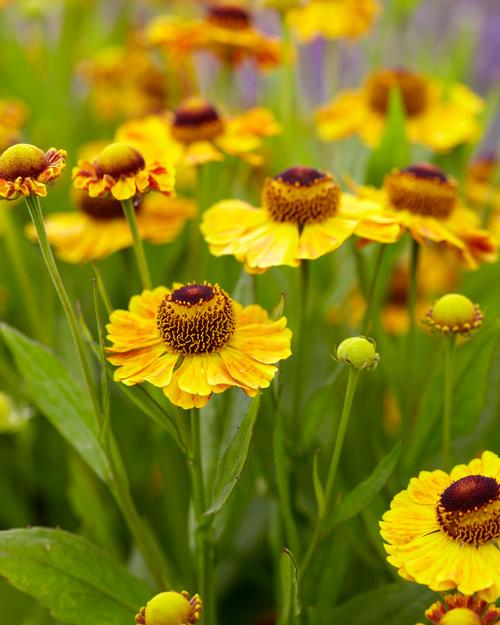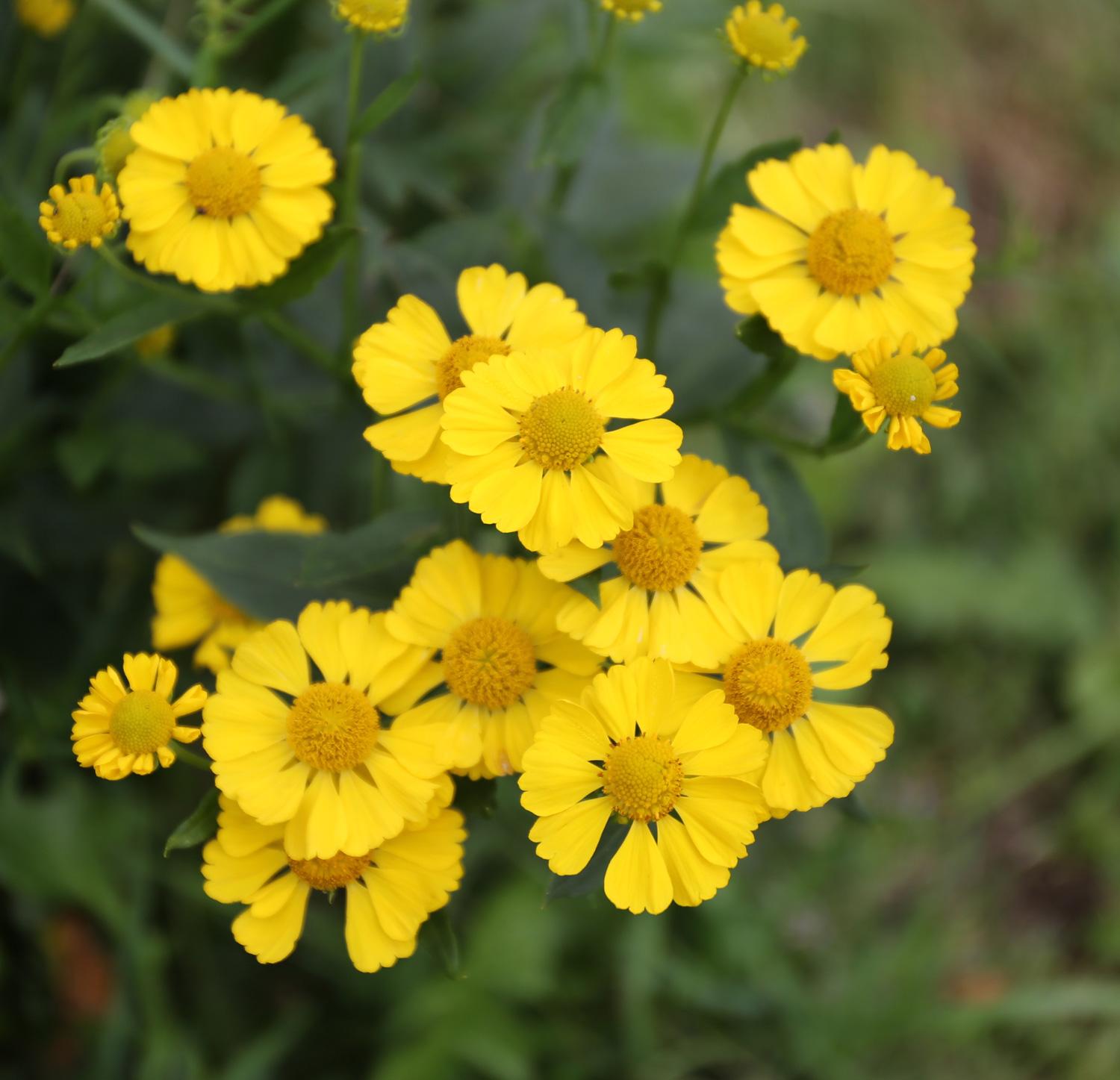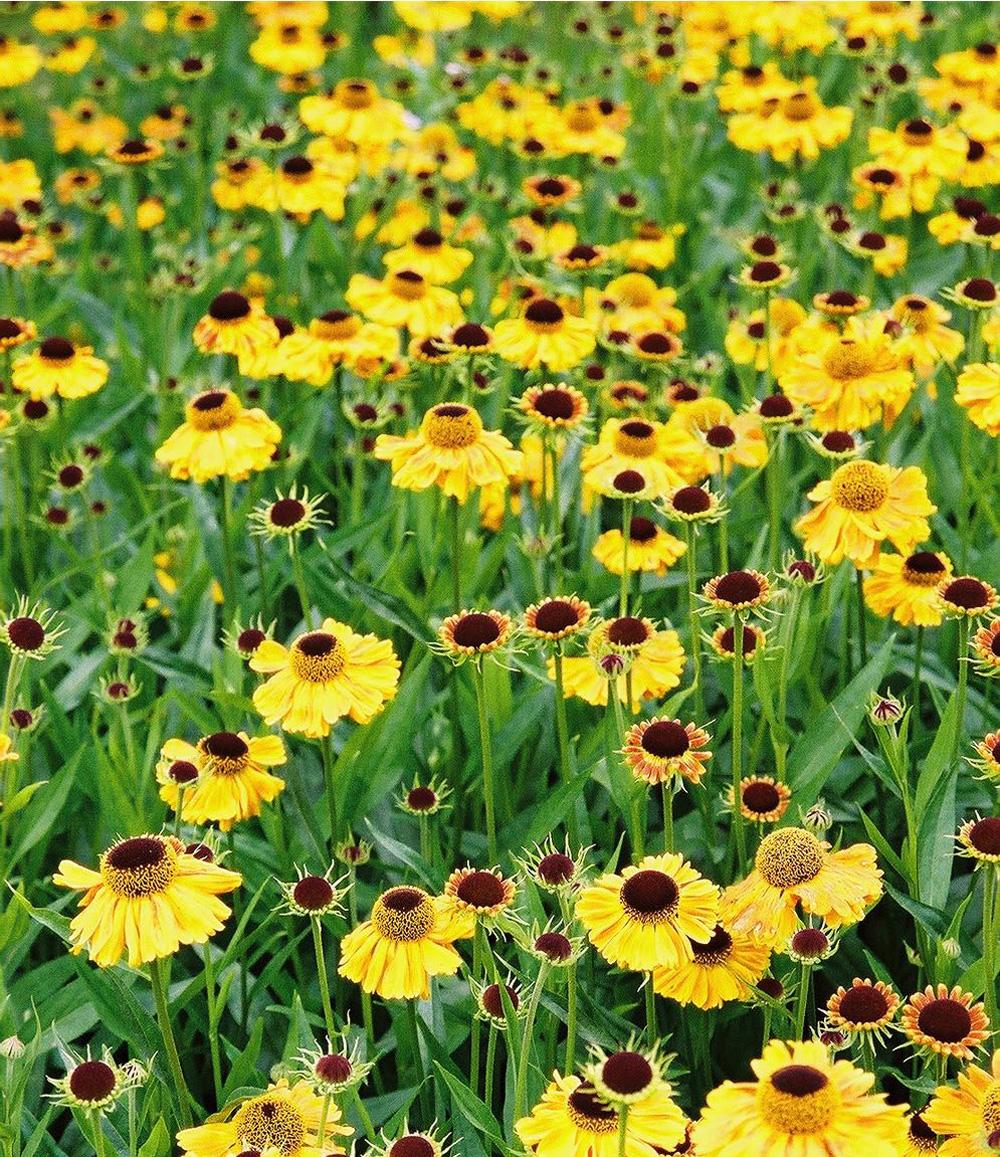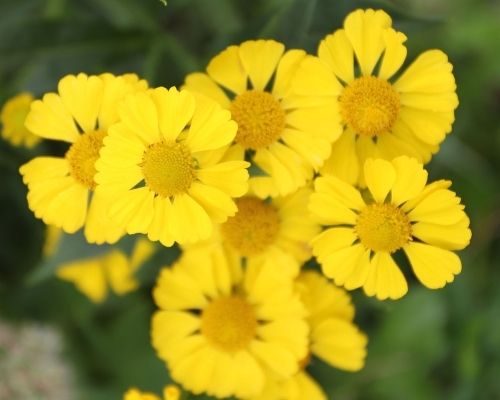Your Guide to Planning, Planting, and Growing Heleniums
Heleniums are colorful, easy-to-grow perennials that flower in late summer. Their daisy-like blossoms measure 1 to 2” across and have prominent button-like centers. The flowers bloom in warm, autumnal colors such as brick red, golden yellow, coppery gold and rusty orange.
What to Know About Heleniums
Heleniums are in the aster family. They are native to North and South America, but most garden varieties are hybrids. Common names for this plant include Helen’s flower and sneezeweed (though heleniums are not allergy-inducing!). The plants grow in clumps and have an upright habit with lance-shaped leaves. Overall heights are typically 30-48” tall.
Helenium are disease resistant, pest resistant and usually avoided by deer and rabbits. The blossoms attract bees, butterflies and other beneficial insects. They are also excellent cut flowers.

Plan for Success
Sun and Shade: In the wild, heleniums grow in damp meadows and at the edge of woodlands. In gardens, they should be planted in full sun.
Soil Conditions: Heleniums prefer fertile soil with a good amount of organic matter. The soil should be well drained, yet the plants need consistent moisture throughout the growing season and are not suitable for dry climates.
Hardiness: Hardiness varies, but most cultivars are winter hardy in zones 3 to 8.

Where to Plant Heleniums
Heleniums are an excellent addition to mixed perennial borders as well as informal, naturalized plantings. They are a must for butterfly gardens because the flowers are an important source of late season pollen and nectar. Heleniums prefer soil that stays relatively moist, so they are often included in rain gardens.
Position the plants in the middle or back of a flower bed, keeping in mind their mature height of 3 to 4 feet. Good companions for heleniums include purple asters, monarda, agastache, goldenrod, echinacea, rudbeckia, Joe Pye weed, Russian sage, dahlias and ornamental grasses.

How to Grow Heleniums
Container-grown helenium may be planted anytime between spring and fall. Bare root helenium should be planted in early spring. If the weather is dry, water the plants regularly for the first month to help them establish new roots. Newly-planted perennials usually flower the first year, but will take at least one full growing season to mature.
In areas that get plenty of summer rainfall, heleniums may grow up to 4 feet tall and need to be staked. If your plants regularly grow taller than you’d like, pinch back the new growth in late spring. This will delay the flowers by about a week, but the overall plants will be stockier and self-supporting.

Caring for Heleniums After They Bloom
Deadheading faded flowers will keep the plants looking neat and encourage reblooming.
Heleniums have shallow roots, and if growing well, they will benefit from being divided every 3 to 5 years. You’ll know it is time to divide if flowering decreases and/or the plants seem weakened. The best time to divide heleniums is early spring.
Shop for heleniums HERE.
Learn more about sun-loving perennials:
How to Select Perennials for All-Season Color
Best Perennials for Late Summer Color
10 Easy Perennials for Sunny Gardens


